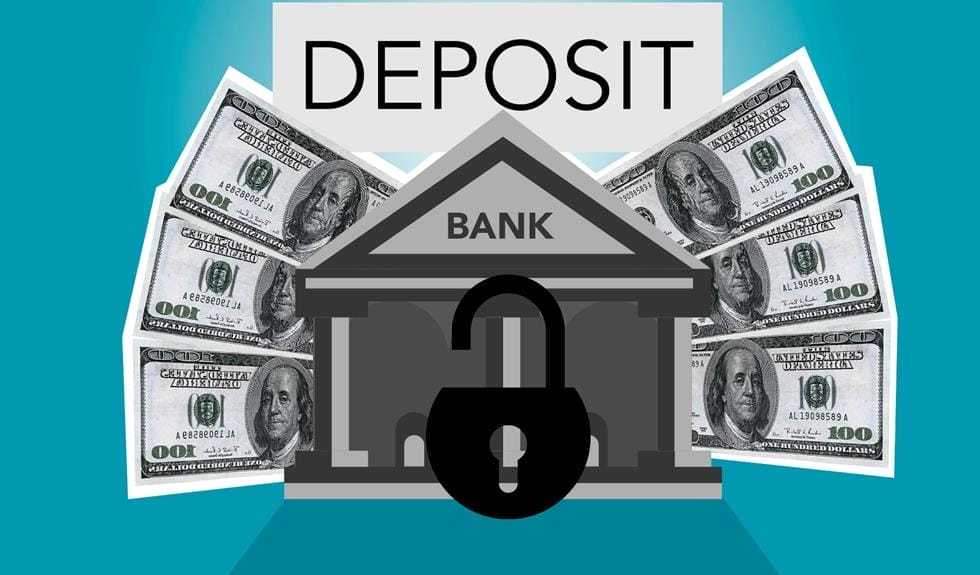In an era where cyber threats are increasingly prevalent, small and medium-sized businesses (SMBs) must proactively safeguard their digital assets. It is crucial to allocate a portion of operational budgets to cybersecurity.
This article provides an in-depth understanding of how much SMBs should set aside for cybersecurity. It emphasizes the significance of a cybersecurity budget, outlines what it should encompass, and discusses factors that influence its size.
Moreover, it provides insight into potential costs associated with data breaches and common cyberattack types. The objective is to help SMBs make informed decisions that fortify their cyber defenses, thereby ensuring sustainable business growth and maintaining customer trust.
Key Takeaways
- 68% of organizations surveyed experienced a cyberattack in the past 12 months, highlighting the importance of budgeting for cybersecurity.
- Small businesses are not immune to data breaches, as 43% of data breaches involve them.
- Establishing a cybersecurity budget not only protects your business from cyberattacks but also satisfies risk-assessment clauses in contracts and helps with compliance and maintaining cybersecurity standards.
- Investing in cybersecurity is crucial for staying competitive, as it helps mitigate the risks and costs associated with data breaches.
Importance of Cybersecurity Budgeting
Recognizing the importance of budgeting for cybersecurity is a critical step in safeguarding your small to medium-sized business (SMB) from the increasing threat of cyberattacks. An intentional cybersecurity budget not only provides financial resources for protective measures but also signifies a proactive stance against digital threats.
Strategies for effective cybersecurity budgeting should include a regular risk assessment, investment in employee training, and allocation for incident response procedures. Remember, underinvestment can result in costly breaches with impacts reaching far beyond financial loss. Therefore, businesses must prioritize cybersecurity in their budgeting process, allocating funds purposefully and strategically to create a robust defense system.
This commitment to cybersecurity budgeting ensures your SMB stays competitive and secure in a digital age.
Areas to Allocate Cybersecurity Funds
Regularly, when strategizing the allocation of cybersecurity funds, it’s crucial to identify key areas within your business that demand particular attention and resources.
An essential area to consider is employee awareness and training. Research indicates that many cyberattacks originate from employee error. Therefore, investing in cybersecurity training for your staff can significantly reduce the risk of cyber threats.
Additionally, allocate funds for secure software or hardware that can safeguard your business’s data.
Another pivotal area to consider is emergency response planning. Having a well-funded plan in place can significantly reduce the impact of a data breach.
Prioritizing these areas in your cybersecurity budget can greatly enhance the security posture of your business.
Determining Cybersecurity Spending
Understanding how to determine your business’s cybersecurity spending is a crucial step towards enhancing your security posture, following the strategies for fund allocation detailed in the previous section.
The ROI of cybersecurity investments should be a key consideration in your budgeting process. This involves analyzing the cost of potential breaches versus the investment in preventive measures.
Factors influencing cybersecurity budget allocations can range from the size and nature of your business, the sensitivity of the data handled, to the regulatory environment in your industry.
A flexible approach, where spending can be adjusted based on evolving threats and business needs, is recommended.
It’s also vital to regularly review and assess your cybersecurity spending to ensure it delivers maximum protection at optimal cost.
Understanding Data Breach Costs
Data breach cost analysis is a critical aspect of cybersecurity budgeting. It involves examining the potential financial impact of a cyberattack on your business. Understanding the financial impact of cyberattacks is vital in formulating a comprehensive cybersecurity strategy.
The average cost of a breach for organizations with fewer than 500 employees is $3.31 million. Additionally, the cost per breached record averages $164. These costs encompass both direct expenses like theft, remediation, fines, and legal fees, as well as indirect costs such as business disruption and reputational damage.
Mitigating the costs of a data breach is feasible through preemptive measures. These include regular risk assessments, incident response planning, and investing in cybersecurity insurance policies. Taking these steps can considerably reduce the financial impact of a breach on your business.
Common Cyberattack Types
While mitigating the costs of a data breach is crucial, it’s equally important to understand the common types of cyberattacks that businesses face. One such attack is phishing, which can be prevented by educating employees about suspicious emails and investing in reputable anti-phishing tools.
Securing network infrastructure is another critical step, as it helps to prevent attacks such as malware infections and denial-of-service attacks. Regularly updating and patching systems, using firewalls, and encrypting sensitive data are key measures for infrastructure security.
Furthermore, employing intrusion detection systems can help identify potential threats before they cause damage. By understanding these common cyberattacks and implementing preventive measures, businesses can significantly reduce their risk of a costly breach.
DOS and DDoS Attacks
A significant proportion of cyber threats faced by businesses today are Denial-of-Service (DoS) and Distributed Denial-of-Service (DDoS) attacks, requiring a strategic approach and adequate budgeting for effective prevention and mitigation.
Preventing DoS and DDoS attacks is critical, as they can severely impact a business’s operation and reputation. Mitigating the impact of data breaches is equally important, as data breaches can lead to significant financial losses and erode customer trust.
| Threat Type | Recommended Action |
|---|---|
| DoS Attacks | Invest in prevention technologies, maintain updated systems |
| DDoS Attacks | Deploy traffic filtering, rate limiting |
| Data Breaches | Regular system audits, employee training |
| Insider Threats | Access control, monitoring software |
| Phishing Attacks | Employee education, email filtering |
TCP SYN Flooding
Frequently overlooked, TCP SYN flooding is a common type of cyberattack that small and medium businesses need to safeguard against in their cybersecurity planning and budgeting. This type of attack can overwhelm a network, preventing legitimate users from accessing services.
To prevent TCP SYN flooding, it’s essential to budget for sophisticated firewalls and intrusion detection systems. Equally important is training staff in cybersecurity best practices, as mitigating password attacks is a critical part of preventing TCP SYN flooding.
Businesses should also consider regular system audits and network traffic analysis to identify any unusual activity. By investing in these preventative measures, SMBs can significantly reduce their vulnerability to TCP SYN flooding and other cyber threats.
Ping-of-Death Attacks
Ping-of-death attacks pose a significant threat to small and medium-sized businesses, requiring careful consideration in cybersecurity budget planning. These attacks exploit vulnerabilities in the Internet Control Message Protocol (ICMP), causing system crashes or reboots. To prevent these attacks, securing network infrastructure is crucial.
Here is a brief overview of key strategies:
| Strategy | Description | Cost Implication |
|---|---|---|
| Regular updates | Keep your systems updated to patch security holes | Varies based on the system chosen |
| Intrusion Detection System | Monitor network for malicious activities | Varies based on the complexity of network |
| Firewall setup | Restrict incoming ICMP traffic | Varies based on the complexity of the network |
Investing in these strategies can be instrumental in preventing ping-of-death attacks, thereby protecting your business while ensuring operational continuity.
Teardrop Attacks
Several small to medium-sized businesses face the risk of teardrop attacks, which exploit a vulnerability in older versions of Windows to overload systems and disrupt operations.
Preventing teardrop attacks primarily involves updating and securing network infrastructure. Regular patch management is crucial, ensuring all software is up-to-date, particularly Windows operating systems. Implementing robust firewalls and intrusion detection systems can further boost your defenses.
Educating staff about the risks and signs of a teardrop attack is another essential step. Lastly, consider investing in cybersecurity insurance for additional protection. Although it may seem costly, the financial impact of falling victim to a teardrop attack can be significantly more damaging.
Prioritize your cybersecurity budget to safeguard your business.
Botnets
A significant number of small to medium-sized businesses are under constant threat from botnets, a type of cyberattack that can compromise their network security and disrupt operations. Investing in botnet detection tools is crucial in identifying potential botnet activities, such as irregular network traffic patterns, and provides an opportunity for swift intervention.
Equally important is botnet prevention. Businesses should regularly update their antivirus software, use strong and unique passwords, and educate employees about the dangers of clicking on unknown links or downloading suspicious attachments. A budget for cybersecurity should allocate sufficient funds to these proactive measures.
Phishing Attacks
Beyond the threat of botnets, there is also the pressing concern of phishing attacks, which SMBs must learn to recognize and counteract effectively. Detecting phishing attempts is crucial to maintaining the integrity of your business’s data. This involves closely scrutinizing all incoming communications, particularly those that request sensitive information.
Educating employees about phishing is an essential part of any cybersecurity strategy. This ensures that every member of your team is equipped to identify potential threats and respond appropriately. Training should be regular and comprehensive, encompassing various forms of phishing attacks.
| Strategies for Recognizing Phishing | Description |
|---|---|
| Detecting Phishing Attempts | Scrutinize communications requesting sensitive information. |
| Employee Education | Provide regular and comprehensive training to identify threats. |
| Regular Updates | Stay informed about the latest phishing tactics. |
Man-in-the-Middle Attacks
In your journey to robust cybersecurity, understanding and countering Man-in-the-Middle (MitM) attacks is a critical step. These attacks occur when an unauthorized entity intercepts communication between two parties, often to steal sensitive data.
Preventing eavesdropping attacks, a common form of MitM involves the use of encryption protocols like SSL and TLS, which ensure data integrity and confidentiality.
Additionally, safeguarding against network sniffing, another MitM tactic requires secure configurations and regular network monitoring. A well-trained workforce, aware of phishing techniques, can also deter such intrusions.
Investment in advanced intrusion detection systems and network segmentation can further bolster your defenses.
Drive-by-Download Attacks
The next crucial aspect of your cybersecurity plan involves understanding and mitigating drive-by-download attacks. These attacks occur when a user unintentionally downloads malicious software while visiting a website, causing their system to be infected.
Preventing malware infections is key to stopping these attacks. Implementing an advanced threat protection solution on all endpoints helps to identify and block malicious downloads.
Securing web browsers is another crucial step. Ensure browsers are always updated to the latest version, employ browser security settings to block unauthorized downloads, and consider installing ad-blockers to reduce the risk of encountering malicious scripts.
Additionally, training employees to recognize and avoid suspicious websites contributes to a robust defense against drive-by-download attacks.
Password Attacks
Shifting our focus to another critical dimension of cybersecurity, we now explore the prevention of password attacks.
An essential aspect of this process is securing user accounts. This begins by instituting stringent password policies and ensuring all users abide by them. It is also crucial to implement two-factor authentication, adding an extra layer of protection beyond mere password-based security.
Identifying weak passwords is another vital step in preventing password attacks. Weak passwords are often easily guessable or crackable, making them prime targets for cybercriminals. Utilize password strength-checking tools to identify and change weak passwords promptly.
Regular training and awareness programs should also be organized to educate employees about the importance of strong passwords and the dangers of password reuse.
Prioritizing Cybersecurity in Business
As a business leader, you must prioritize cybersecurity to safeguard your company’s digital assets and maintain customer trust. The importance of cybersecurity awareness cannot be overstated. It forms the foundation of a robust defense against cyber threats.
As part of this, it’s crucial to develop a cybersecurity budget. This begins with understanding your company’s specific needs and vulnerabilities. Allocate funds to areas such as risk assessment, incident response, employee training, and security infrastructure.
Reviewing this budget regularly is also key. Cyber threats evolve, so should your cybersecurity strategy. Make sure your budget can adapt.
Prioritizing cybersecurity isn’t simply a preventative measure, it’s an investment in your company’s future stability and credibility.
Conclusion
In conclusion, fortifying cybersecurity measures is a strategic investment critical to the survival and growth of SMBs in today’s digital marketplace. Recognizing the potential devastation of cyberattacks and proactively allocating funds toward cybersecurity can make the difference between business continuity and insolvency.
The adage, ‘An ounce of prevention is worth a pound of cure,’ holds true, emphasizing the need for SMBs to prioritize cybersecurity in their budgetary considerations, mitigating risks, and safeguarding business operations.







